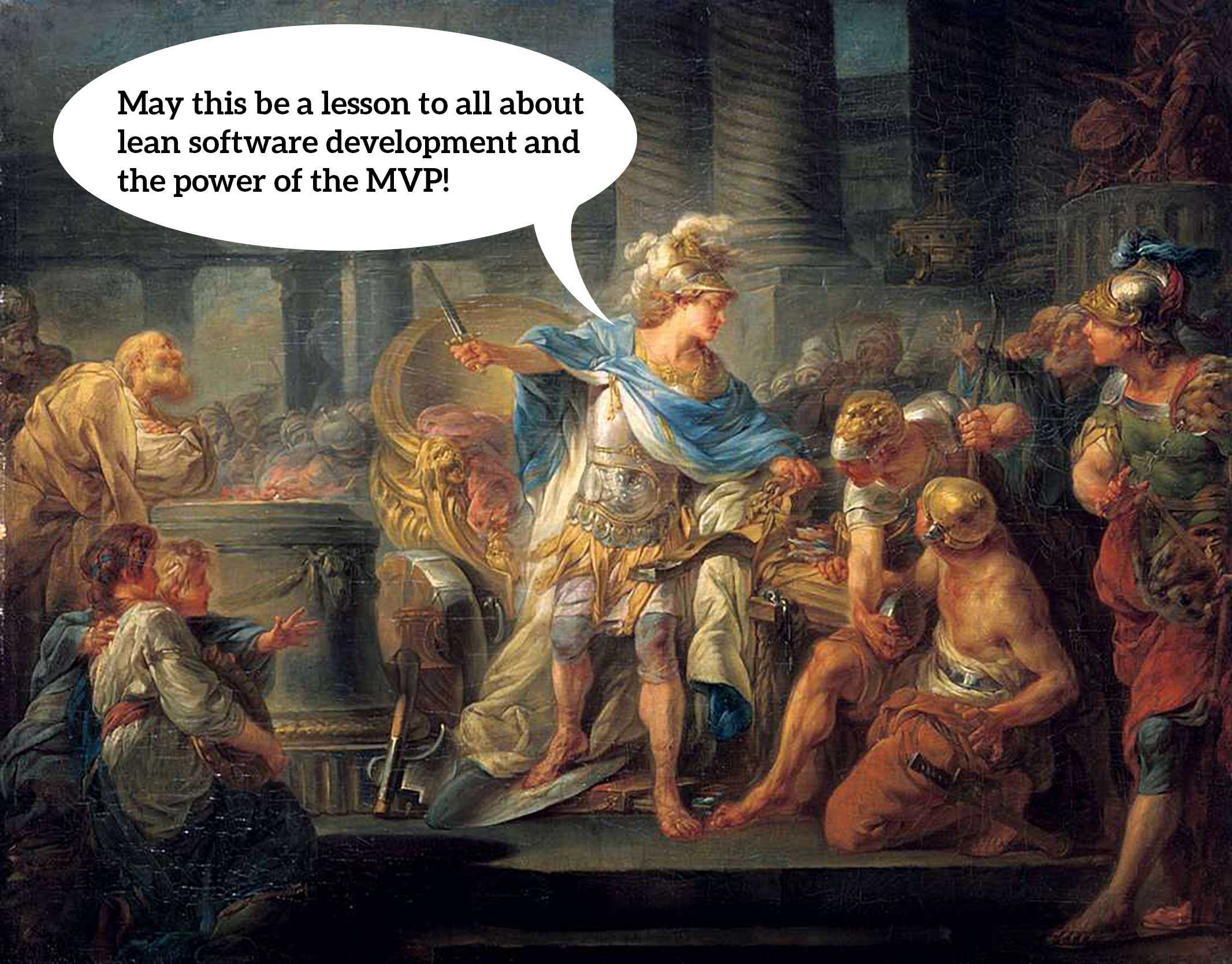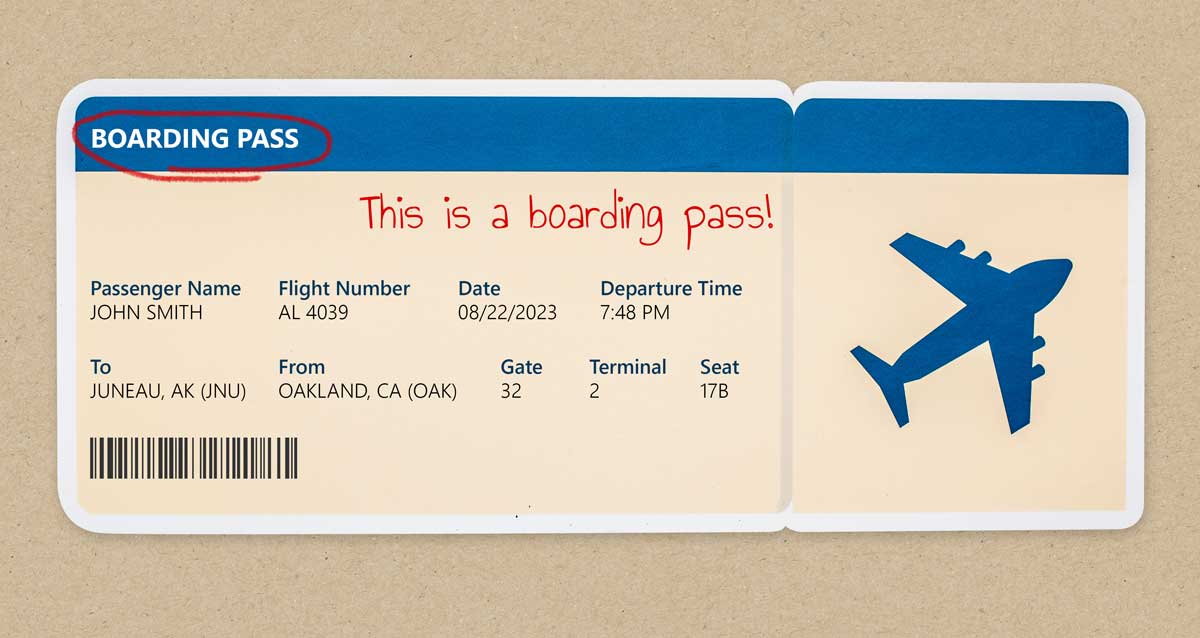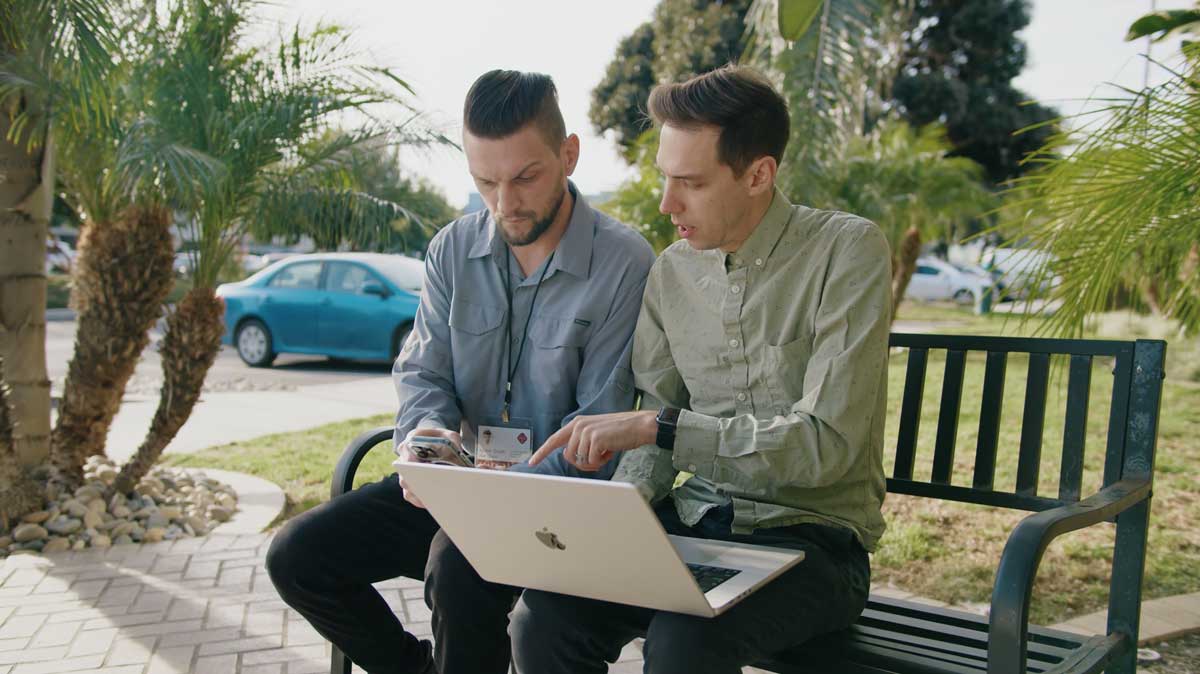
Alexander the Great’s Approach to Software Development
 Read Time: 7 minutes
Read Time: 7 minutesHow do you untangle a complex problem to find the simplest solution?
See what a 2000-year-old tale about a knot can teach us about the benefits of a lean approach to software development today.
The Legend of the Gordian Knot
When Alexander the Great traveled through what is now modern day Turkey, he came upon a curious challenge.
In the town of Gordium in Phrygia was an ancient ox cart tied with a complex mass of knots known as the Gordian Knot. A local legend claimed that whoever could loosen it would be destined to rule all of Asia. Alexander struggled with the convoluted web of cords before determining, “It makes no difference how they are loosed.”
So in one simple yet bold act, he slashed through the knot with his sword.
From Alexander to the Modern MVP Philosophy
This simple solution to a complex problem could arguably be called—2000 years before the term came into existence—a minimum viable product, or MVP.
When Alexander first confronts the Gordian Knot, the assumption is that he will attempt to untie all the pieces, which were described by the ancient historian Quintus Curitus Rufus as “several knots all so tightly entangled that it was impossible to see how they were fastened.” Instead, he tries a minimal, unexpected solution, and it takes care of the problem completely.
Eric Ries popularized the concept of an MVP in his book The Lean Startup, saying, “the minimum viable product is that version of a new product which allows a team to collect the maximum amount of validated learning about customers with the least effort.”
In other words, start simple, test, make adjustments; rinse and repeat.
MVPs are about challenging assumptions and trying solutions that may initially seem “too simple.” This doesn’t mean your final product will be too simple to do the job thoroughly (if that were the case, it wouldn’t be the right product for you), but it is a stage we begin at to better test assumptions.

Simplicity Through The Lean Startup
One of the great advantages to adopting this Lean Startup Methodology is that you may discover a far simpler-than-expected iteration of your product that satisfies your needs, saving you time and money.
Of course, Alexander found a solution to his problem rather quickly, but there are many stages to building suitable software for your business. He also didn’t have more to keep cutting after that first successful slash.
But creating software is an iterative process that requires refinement. In the spirit of experimentation, we build a simple product, test core assumptions, and make adjustments accordingly. We build and adjust in small stages until the correct product has been developed. In this way we avoid wasting time on features you won’t use, we save you money by not building more than you need, and the final product is stable and easy to use because it fits perfectly into its role in your organization.
The Southwest Airlines Solution
This process takes humility. Cody Thompson, COO of business consulting company The Table Group, tells an intriguing story on his podcast about how Southwest Airlines solved a problem they were having with customers accidentally throwing away their paper boarding passes before they reached their gate (Ah, the days before cell phones!).
He explains that Southwest agents at the ticket counter “would print the boarding pass and the receipt on the same paper…and they had this huge problem where people were just throwing away their boarding pass because it looked like a receipt.”
Southwest investigated several solutions to the problem, such as installing self-service kiosks or building out different systems, all of which cost millions of dollars. According to Thompson, the solution they ended up adopting was to “tell all their gate agents to write ‘This is a Boarding Pass’ in red pen on [the] boarding passes, and it solved the problem almost immediately.”

While self-service kiosks were emerging in the industry, Southwest chose not to adopt this new technology immediately. By staying lean, they found a simple solution with a red pen and waited to adopt the kiosk at a point that was right for them.
While red pens are far less sexy than new automated systems, Southwest had the humility to solve their problem in the leanest way. The resources they saved—from the initial cost, to ongoing maintenance, to training and onboarding employees—can’t be overstated.
The Lean Software Ecosystem
It is in this same spirit that we build the leanest software you need.
Complex software ecosystems can be a burden on your team's productivity and morale. With too many tools to manage, employees might find themselves navigating through a maze of features, unable to focus on their core tasks. New hires will have a longer training and on-boarding process.
On the other hand, a smaller, carefully curated software ecosystem makes your employees’ lives better, reduces potential points of cyber-attack, and simplifies security measures. A concise software stack is a boon for extracting valuable insights. Fewer tools mean better data integration, which provides a clearer picture of your business's performance.
So while the allure of large software solutions can be tempting for managers looking to boost productivity and stay ahead of the competition, we want to challenge the notion that more internal software equals better business outcomes. We encourage a strategic, streamlined approach to software adoption, focusing on essential tools that align with your specific needs.
By keeping your software lean, you can adapt to new challenges and opportunities more efficiently. This adaptability allows your business to stay competitive and seize emerging trends without being weighed down by unnecessary software.
A Minimalist Approach to Cut Through Your Gordian Knot
When a client approaches us with a custom software project, they may carry with them some assumptions.
For example, they may assume that the software needs to have a lot of features for it to fulfill the business goals. Or that it must be retrofitted to work with other products. Or that an entire system needs to be built, rather than just one piece.
To make the best possible product for your business, we will need to step outside these assumptions and approach the problem from the perspective of creating the leanest version of your product, testing how it works, and building out from there. This process has been proven result into the best use of everyone’s time and resources.
And frankly, if you don’t need custom software, we won't recommend it.

We want to help you cut your Gordian Knot—that’s why we are committed to taking a minimalist approach to our projects and avoiding assumptions throughout the software journey. If you’ve got an upcoming custom software project, contact us to explore how our core values can ensure your project’s success.

We are custom software experts that solve.
From growth-stage startups to large corporations, our talented team of experts create lasting results for even the toughest business problems by identifying root issues and strategizing practical solutions. We don’t just build—we build the optimal solution.
From growth-stage startups to large corporations, our talented team of experts create lasting results for even the toughest business problems by identifying root issues and strategizing practical solutions. We don’t just build—we build the optimal solution.


